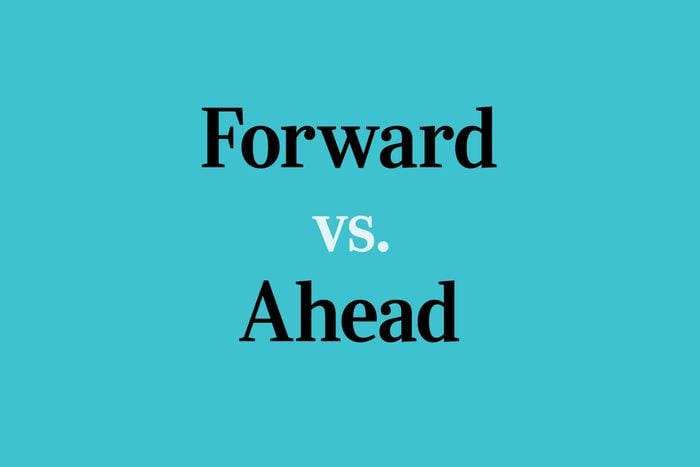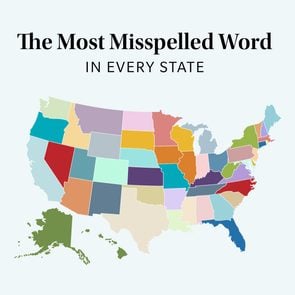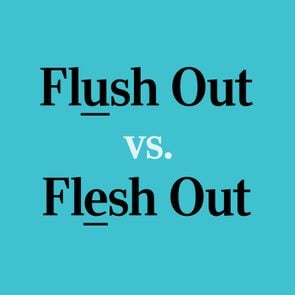Ahead vs. Forward: What’s the Difference?
Updated: Jan. 05, 2023

The difference between forward and ahead gets tricky, but it doesn't have to leave you stumped!
English grammar is a tricky topic—and in light of a recent episode of Netflix’s hit show The Crown, you might be wondering what the difference between two words, in particular: ahead and forward. The difference between “ahead” and “forward” is easy to grasp once you understand it. Still, people use them interchangeably despite their definitions, and it may seem like a confusing grammar rule.
Ahead and forward are words used to describe a spatial position or movement, respectively. Depending on how you use them, they can be different parts of speech, but the common misuse of these words happens most when used as adverbs.
While ahead means a location in front of a subject or the speaker, forward speaks to a direction of movement. In the fifth episode of The Crown Season 5, “The Way Ahead,” Princess Anne and Prince Philip get upset when Queen Elizabeth says “forward” instead of “ahead” in a phrase that calls for the latter. The royal debate has caused a stir, so here’s how you can tell the words apart for good.
When to use “forward”
Merriam-Webster defines forward as an adverb: “to or toward what is ahead or in front.” In light of this, “forward” means to move toward something. As an adjective, it has similar descriptions of movement, such as “situated in advance” or “moving, tending or leading toward a position in the front.”
The correct usage of the word forward should explain a movement, not a position. For example, “He walked forward.” You can also use forward as a description of pleasurable anticipation, as in, “I’m looking forward to seeing you tonight.”
Other examples of the correct way to use forward in a sentence include:
- “The car moved forward ahead of the crowd.”
- “Move the joystick forward to make your character walk.”
- “He leaned forward toward her.”
- “I fell forward and landed on my arm.”
- “My phone has a forward-facing camera for taking selfies.”
- “Instead of propelling the ball forward, you missed your target and kicked at nothing.”
When to use “ahead”
The word “ahead” as an adverb or adjective has the definition of “in a forward direction or position” or “in front,” according to Merriam-Webster. You can also use the word ahead to describe a future time, as in “look ahead,” which means you are planning something.
Although at first, the word “ahead” might appear to explain a movement, the definition points to a position. For instance, you might see a large oak tree on the road in front of you. Instead of saying, “There’s an oak tree forward, up the hill,” you should say, “There’s an oak tree ahead, up the hill.” And everyone has heard the phrase “To get ahead,” which is another way of saying to change your position—not your direction. Keep that in mind, and the difference between forward and ahead won’t feel so complicated, sort of like grasping affect versus effect or each other versus one another.
Some practical examples of how to use ahead correctly are:
- “I’ve been making my car payments ahead of time.”
- “You go ahead of me; I’ll stay behind you.”
- “You’re ahead of me in the game.”
- “They let us get ahead of the teachers to skip the line.”
- “Traffic ahead is ghastly.”
- “The cat is ahead of the dog, ready to start running if it needs to.”
How to know when to use forward or ahead correctly
The easiest way to check if you understand the difference between forward and ahead is to think about position versus direction. If an item is ahead of you, it is in front of where you are. If someone is walking forward, they are in active movement.
Other tips to help you out:
- Ahead generally refers to where you are in space and time. What do you see in front of you? You may use ahead to describe anything in front of you, even if the person or thing is moving.
- If you’re confused about if someone should come “forward” or “ahead,” think of how the word “toward” works. A person wouldn’t move ahead of you to come toward you.
- “Pay it forward” is an expression to describe doing a good deed (as in, you’re moving the kindness someone gave you forward to another person). “Paying ahead” means you are paying something in advance of a due date.
- “The fire ahead of the store” describes a fire that’s not in the store; it’s outside the store. However, if you say, “The fire is ahead of the cash register, toward the back,” this perfectly describes the fire’s position. If the fire is going forward, it’s moving!
Some grammar rules have changed in the last decade, so when in doubt, check the most recent guidance you can find when you’re confused about word differences or rules of speech.



